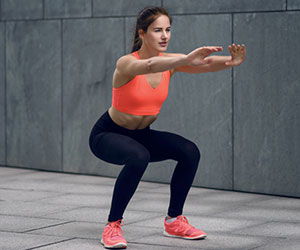 If you are new to exercising, it may seem like there’s a whole new language to learn. Carb, squat, HIIT, plyometrics, deadlift, and burpee are just a few terms that might make a newcomer’s head spin. Exercising is crucial to improving your health and promoting weight loss, and we want our gastric sleeve, gastric bypass, and gastric band patients to feel comfortable exercising and being around people who do exercise. Knowing some terms can help you feel more “in the know” and less likely to feel uncomfortable working out, whether it’s in the gym, outside, or in your living room.
If you are new to exercising, it may seem like there’s a whole new language to learn. Carb, squat, HIIT, plyometrics, deadlift, and burpee are just a few terms that might make a newcomer’s head spin. Exercising is crucial to improving your health and promoting weight loss, and we want our gastric sleeve, gastric bypass, and gastric band patients to feel comfortable exercising and being around people who do exercise. Knowing some terms can help you feel more “in the know” and less likely to feel uncomfortable working out, whether it’s in the gym, outside, or in your living room.
What is a Bodyweight Squat?
A bodyweight squat is basically squatting down without holding any additional weight and getting back up again. It’s a position you may do every day, whether it’s picking something up off the floor or petting your cat, so it’s a functional exercise. Some squats call for adding weights, but bodyweight squats use just your own bodyweight.
How Do You Do a Bodyweight Squat?
- Begin in a standing position. Feet a little more than shoulder width apart. Feet outward pointed approximately 5 to 15 degrees.
- Bend your knees to a squatting position and reach your butt behind you toward a wall (an imaginary wall is fine)
- Keep your chest upright. You can either clasp your hands chest high in front of you, hold them out in front of you level with the ground, or place your hands behind your head. It may help to keep your eyes fixed on a spot in front of you.
- Keep your weight in your heels.
- Maintain your knee position above your feet, do not bend them in.
- Bend as low as your can, then push up through your heels to a standing position.
(Tip: watch a video online to make sure you understand what it should look like.)
What Are the Benefits of a Bodyweight Squat?
Bodyweight squats work several muscle groups at one time: glutes, hamstrings, quads, and hip extensions. This can lead to more clearly defined leg muscles. Squats also strengthen your joints, tendons, and ligaments. By holding your chest upright, you help strengthen your core and improve posture. If you do these squats in a high number of reps, you will raise your heartrate and get a good cardiovascular workout. One huge benefit to incorporating bodyweight squats into your workout routine to improve your health and encourage weight loss is that these can be done in the comfort of your own home or office. If you have a few spare minutes (maybe while a pot of water is boiling or you’re on hold on a phone call) you can do a few squats.
If you’ve been given a clean bill of health to start exercising after gastric sleeve, gastric bypass, or gastric band surgery, try incorporating bodyweight squats into your exercise routine. It may take you time to work on your form and body position, but once you do, squats can be a great exercise you can do in the privacy of your home or at the gym. If you master the bodyweight squat, there are a host of other variations of the squat that can help strengthen different muscle groups and add variety to your workout.
The above is offered by Dr. Shillingford, M.D., P.A., a Center of Excellence Surgeon specializing in gastric sleeve, gastric bypass, and lap band surgery. Dr. Shillingford’s reputation for excellent surgical skills and comfortable bedside manner attract patients from all over Florida, including Miami, Fort Lauderdale, Naples, Tampa, Orlando, and Jacksonville. His bariatric weight loss patients receive top notch care during their hospital stay at Northwest Medical Center’s Center for Excellence in Bariatric Surgery, where he serves as Medical Director, and during their follow up care in his Boca Raton office. But, it’s up to the patients themselves to incorporate exercise into their daily lives to make the most of their weight loss efforts.

 Am I A Candidate
Am I A Candidate  BMI Calculator
BMI Calculator  Why Choose Us
Why Choose Us